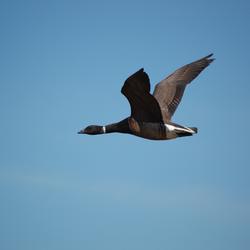I study Arctic wildlife and ecosystems with collaborators at the Alaska Science Center, Department of Interior agencies, and other state and local partners. My research focuses on four components: Vital rate estimation and demographic modeling, GIS spatial analyses to test hypotheses about wildlife movement patterns and habitat associations, ecosystems research, and analytical software development. I have used field and remote sensing data to model the distribution and abundance of polar bear dens, measure goose forage availability in Arctic wetlands, and design habitat protection scenarios to help mitigate potential impacts of oil and gas development on Alaskan waterfowl. I also recently developed an R package for working with phytoplankton taxonomic and functional trait data, as part of a collaborative effort to understand how climate change and extreme weather events affect lake ecosystems and phytoplankton communities. Current projects include development of a Bayesian hierarchical integrated population model (IPM) to evaluate the effects of phenology mismatch and density dependence on Arctic-breeding goose populations.










